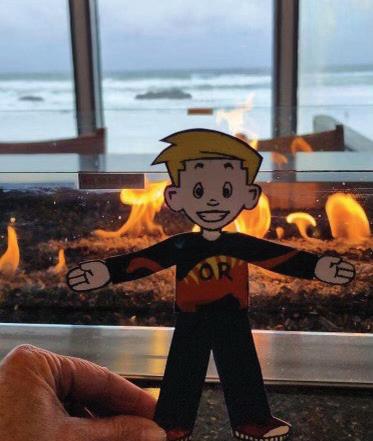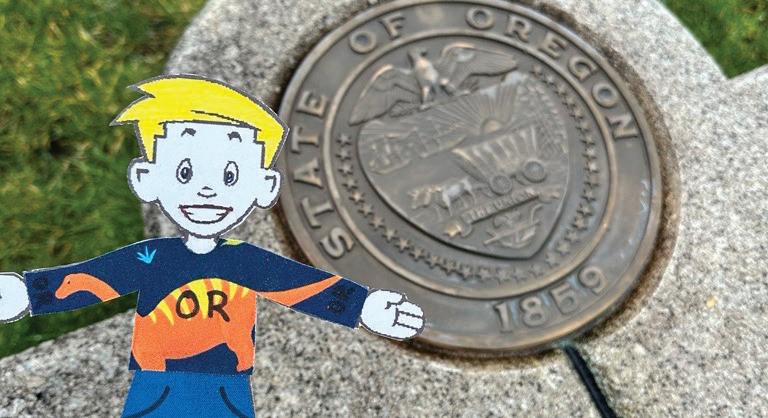









A disorganized workplace is any space devoted to work that is not efficient as a work environment because of clutter or other types of distraction. This workspace could be a desk, home office, work cubicle or entire corporate office. Here are some types of general disorganization and clutter that may lead to a disorganized workspace:
• Trash: Trash can sometimes build up when there isn’t a wastebasket within reach or you’re stuck at your desk for several hours. Putting garbage directly into a wastebasket, however, keeps it separate from your important work papers, keeping your work and tools accessible.
• Lacking drawers or containers: Paperwork with no filing system can add up quickly, even on a large desk. Filing cabinets, plastic tubs and other organization tools are available for affordable prices and can help make your workspace more organized and production.
• Computer disarray: Digital files without an effective organization system of folders and sub-folders can decrease work productivity. Most operating systems allow for digital organization through cloud storage and physical storage to keep files in order.
• Sentimental items: Some of
the most challenging things to organize, or part with, are sentimental items like pictures and other trinkets that hold personal value. Minimizing personal items can keep your desk unique yet uncluttered.
Disorganization at work can be about more than just physical space. It also applies to employee and management habits, such as missing deadlines and general disorganization during projects. Here are some other types:
• Tardiness: Tardiness can cause project disruption and disorganization during the day. Managers can work closer with employees to create flexible schedules to reduce tardiness.
• Losing information: Sometimes, a lack of file-sharing software or difficulties with information storage can cause project completion to be a challenge. Providing digital and physical storage options along with sharing tools can help facilitate better organization.
• Overextending: Occasionally, workload and stress can create work fatigue. Creating a company-wide focus on avoiding burnout can help employees feel more valued and avoid disorganization and disengagement.

We have some great news to share. After a rigorous candidate selection and interviews, the hiring team has chosen to move forward with a Program Manager whose mission aligns with that of NWHS, the vision to increase program growth, and continued support of the HOST program with empathy and training.
I’m pleased to announce that Patrick McDermott will be joining the NWHS management team, as the HOST Program Manager starting on March 25th.
He has brought a lot to the HOST program during the last 2.5yrs as a Case Manager, such as asking some great in-depth questions about the why and the bigger picture. Patrick’s understanding of systems, structure, and adaptability brought to light some growing areas within the HOST program, that implemented will take it to the next level in serving youth and young adults experiencing homelessness.
Please join in sending him Congratulations and wishing him the Best of luck!
-Shanta FrisbeeOn March 5, 2024 Abbey McDonald with Salem Reporter published the following article:
For nearly five years, Northwest Human Services’ Outreach Team lugged backpacks and carted a small wagon into Salem’s homeless encampments, treating everything from bug bites to infected amputations.
The team includes nurses and community health workers who treat minor injuries and secure follow-up care when needed, in addition to guiding people through signing up for insurance, housing services, food and mental health assistance.Now, a new van will make their work more convenient for all involved.
Its drawers store hygiene kits, hand warmers, hats, rain ponchos, over-the-counter medicine, dog treats and more. It took its first drive to a homeless encampment in late January, and operates Mondays through Fridays to find people in need throughout the city.
The outreach team was formed in 2019. With both basic medical care and connections to make clinical care appointments at Northwest Human Services, it’s the only medical outreach team of its kind in Salem. “It’s non-judgmental, meeting them exactly where they’re at and seeing what we can do to make their life a little bit better that day,” Borsberry said.. “It’s those interactions that we have to build that rapport and trust.” The outreach team’s work means they see what happens when someone falls through the gaps in Salem’s medical services for unsheltered people.
“We made continued efforts to try to get her engaged in a methadone program,” a form of addiction treatment.Eventually, she ended up spending 45 days in the hospital to treat sepsis in her spinal cord. The team used the Northwest Human Services’ crisis and information hotline to help reunite her with her family who had been working hard to find her. “When she’s got the strength and the health, then we’ll have a nice happy ending to this pretty scary situation” Johnston said.
The team takes as long with each patient as needed. Some days, they can treat as many as 50 people with a walk through Wallace Marine Park. Other days, they’ll treat 10 people relatively quickly and find that the 11th person needs hours of help.
Peter Buekea, outreach coordinator, said that complicated systems for securing housing or health care means their work is often a cycle of quests that unlock even more tasks. Getting someone to the homeless coordinated entry assessment allows them to access additional services, which then reveals that they need a state ID card. That means spending half a day driving to DMVs and waiting in line with them.
“That outreach team deserves recognition for everything that they do. Most of the time they don’t even realize the impact that they have. That team has helped me multiple times when I had injuries sustained while homeless and living in Wallace. They have also saved my life on 2 occasions,” she wrote.
McDonald
Most people they come across have been traumatized by trips to the hospital where they felt like their needs weren’t heard, or worry what will happen to their belongings if they leave their camp, said Justin Davis, an outreach nurse. “All those barriers prevent them from actually getting cared for, and so then their infection that could have been cured with an antibiotic, now they have deep ulcers and then that ulcer has dead skin cells” he said.
A major part of their work involves building rapport with people to figure out what help they need, and how to make it last with additional support beyond wound care. One of their patients came to Oregon to fight wildland fires, and ended up homeless with an opiate addiction. When the team’s community health worker, Jacob Johnston, first met her, she had tunneling abscesses all through her body.
The work is hard, and emotionally draining, the team said. It’s made harder by housed people who have biases toward unsheltered people, said Johnston. Another key part of the work is making sure their patients feel loved and heard, and that they understand that their lives are irreplaceable.
To read the entire article: Salem Reporter






Have you caught wind of the excitement? Flat Stanley has made his way from Indie!
We had the pleasure of welcoming Flat Stanley courtsey of Maggie E’s niece for her classroom project. During his stay, he was fortunate to be guided by several employees from Northwest Human Service throughtout Oregon. Even received a vaccine and check up in our clinic! It was an absolute delight showing him around Oregon.
Though he’s now headed back to Indie, we couldn’t resist sharing some highlights of his adventures. Wishing Flat Stanley a safe flight home!







“Flat Stanley” is a beloved children’s book written by Lambchop, an ordinary boy who becomes extraordinary flattening him to be half an inch thick. This peculiar able to slide under doors and being mailed in envelopes.
The purpose of the book is to entertain children also imparting valuable lessons about the power of from different perspectives. Through Stanley’s adventures, creativity and problem-solving skills. Additionally, the book Stanley’s unusual predicament and cheer for his triumphs.
“Flat Stanley” has become a popular choice in classrooms global awareness. One common activity inspired by the create their own paper cutout Flat Stanley and mail him then take Flat Stanley on adventures, document his travels along with a report of his journey. This project not only a sense of community and cultural understanding as children through Stanley’s adventures.











written by Jeff Brown. The story revolves around Stanley extraordinary after a bulletin board falls on him during the night, peculiar event grants Stanley unique abilities, such as being envelopes.
children with its whimsical and imaginative storyline, while power of resourcefulness, adaptability, and seeing the world adventures, readers are encouraged to embrace their own the book fosters empathy as readers empathize with triumphs.
classrooms for activities promoting literacy, creativity, and by the book is the “Flat Stanley Project,” where children mail him to friends or family around the world. Recipients his travels with photos and stories, and send him back only encourages reading and writing skills but also fosters as children learn about different places and cultures

Every year, when the clocks change and make the jump forward by an hour in the Spring, it may seem like it’s great because of the ‘extra’ hour of daylight in the evenings. However, it wreaks havoc on our bodies. Getting into the habit of acclimating your body to the time change can be quite difficult since human beings are creatures of habit, and we have spent the last four plus months operating on Standard Time.
The average person can form a new habit in three to six weeks with consistent behavioral adaptations. However, this isn’t your average new habit that you get to prepare for in advance and take it at your own pace.
Spring
• If possible, adjust your bedtime habits to closely match that of the time shift that is Daylight Saving Time a few days ahead of the time change. Getting consistent sleep leading up to and after the time shift will help your body adjust faster.
• Help your future self out in the mornings by getting together your clothes for the next day the night before for an easier morning transition after the time change takes effect.
• Reduce your screen time prior to bed to help your body relax faster for going to sleep. That means limiting your usage of television, tablets, and cellphones at least an hour before bedtime.
• Getting out into the morning sunlight will help with re-adjusting your body’s internal clock naturally. If possible, get some exercise in by going for a walk around the block or neighborhood. Staying physically active can help with regulating your sleep patterns.
• Making the Spring Daylight Saving Time change disrupts sleeping patterns and leads to increased health risks for fatigue, heart attack, and even stroke.
• Consuming Alcohol or Caffeine six hours before bedtime has adverse effects on your sleep schedule. Caffeine should only be consumed moderately in the morning.
• Car accidents increase in the mornings after the jump forward an hour in time. This is linked to poor sleep hygiene and increased sleep debt after the time change.
• Sunday, March 10, 2024, Daylight Saving Time begins and goes through Sunday, November 3, 2024.
• Benjamin Franklin is credited as being the first person to propose a form of daylight-saving time in 1784.
• Daylight Saving Time began in 1916 during the First World War by Germany to conserve fuel and other resources. It wasn’t long after that the rest of Europe followed suit. The United States adopted it in 1918.
Workplace injuries increase by 6% in the following days after the Spring Daylight Saving Time change. (OSHA)
The Monday after the springtime change, the risk of a heart attack has an up to 24% increase in humans than any other day thereafter. (The New England Journal of Medicine)
For the first two days after the daylight-saving time transition, the risk of stroke is 8% higher than at any other time of the year. Individuals with Cancer are 25% more likely to experience a stroke after Daylight Saving Time than at any other time of the year. (American Academy of Neurology)
American Academy of Sleep Medicine (AASM), Sleep Foundation.org, National Safety Council (NSC.org), Occupational Safety and Health Administration (OSHA)

Gardening is more than just taking care of plants—it’s about feeling a connection with nature, helping things grow, and finding happiness in watching what you’ve planted thrive. Many people, myself included, feel really good when we grow our own food with our hands, making our outdoor spaces beautiful and alive.
But starting to garden can be scary if you’re new to it. There are so many words and techniques that it can be overwhelming. But don’t worry—trying gardening out is a fun adventure that’s totally worth it.
In my opinion, the best thing about gardening is that it’s okay to make mistakes. If something doesn’t work, it’s not a failure— it’s a chance to learn something new. Every season is like a new beginning to try different ways of gardening.
Keep an open mind when you’re gardening, and be ready for surprises. Whether you’re taking care of one plant or a whole garden, it’s always exciting. Seeing the results of your hard work—like colorful flowers, sweet smells, and lots of food—is really satisfying.
Being outside, touching the dirt, and feeling the sun is really good for your soul. Even if it’s tough because of the weather, like in March in Oregon, don’t give up. Embrace the challenges and keep on gardening with all your energy.
Come join me in this gardening adventure. Let’s learn together and grow our love for plants. With patience, determination, and a lot of care, there’s no limit to what we can achieve. So, I invite you to join me on this journey of gardening.Send me your pictures! We would love to highlight your journey in the Buzz. With a little patience, perseverance, and a whole lot of love for plants, the possibilities are endless.
The Growing Guide for the Pacific Northwest is a great overall guide to planting. Happy Gardening!



 By Arielle Schultz, Compliance Director
By Arielle Schultz, Compliance Director
Each year NWHS submits a Federal Tort Claims Act (FTCA) application to HRSA for medical malpractice coverage. Once our application is approved a covered entity (NWHS) and/ or individual is immune and will not be financially liable for any claims arising from covered activities such as acts or omissions in the performance of medical, surgical, dental, or related functions resulting in personal injury, including death, and occurring within the scope of employment. It is incredibly important to maintain this coverage, especially for appropriate staff so that they are not financially liable for claims, which is why we need staff to submit licensure documentation timely and complete annual trainings.
This application covers clinic staff at a variety of levels, and about 100 staff are added into our FTCA application every year. Below lists how staff are defined in our application:
Licensed Independent Practitioner (LIP)
• This category of staff includes Physicians (MD/DO), Dentists (DMD/DDS), Physician Assistants (PA-C), and Nurse Practitioners (FNP), Pharmacists (PharmD), and Licensed Mental Health and Psychiatric Providers (MD, PMHNP, LCSW, LPC, LMFT, PsyD).
Other Licensed or Certified Practitioners (OLCP)
• This category of staff includes Registered Nurses (RN), Licensed Practical Nurses (LPN), Registered Dietitians, Certified Medical Assistants (CMA, NCMA, and RMA), Certified Community Health Workers, Certified Medical Interpreters, Certified Mental Health Case Managers and counselors (QMHA’s/QMHP’s) with current certification through MHACBO as a QMHA/QMHP, and Mental Health Counselors (QMHP’s) with a current Clinical Social Work Associate License (CSWA) or Professional Counselor Registered Intern (LPC Intern) License through their respective licensing boards, Dental Hygienists, and Certified Dental Assistants, or other licensed and certified staff who are not LIP’s.
Other Clinical Staff (OCS)
• This category of staff are non-certified/non-licensed staff which includes Medical Assistants (MA), Community Health Workers (CHW), Medical Interpreters, and non-licensed/non-certified QMHA’s and QMHP’s.
We all know that taking time out of our schedules to complete trainings can seem daunting or difficult to understand how it really connects to your job. Not only are many trainings done at NWHS required by a variety of federal, state, or other local government entities, they are also important to understanding key elements of the role the organization plays in risk management and creating a culture of safety. Annually with our HRSA FTCA application we submit a variety of trainings to prove that our staff receive education related to risk
management, preventing abuse and neglect, and common areas of risk related to health centers. We will highlight a few trainings that are reported annually to HRSA:
• Risk Management- ALL staff across NWHS are required to complete this training annually, there isn’t an exception to this in the eyes of HRSA. Every staff member has the opportunity to reduce risks in their department, workspace, and while working with members of the community. Understanding proper risk management protocols and policies are incredibly important and all staff need to understand the principles of risk management. With this training being required by HRSA, we will submit the full names, training dates, and job titles of ALL NWHS employees to HRSA in our FTCA application, not just those who work in the clinic.
• NEW! OB Training- this training requirement from HRSA became more of a critical requirement last year than any other years due to it being such a high risk area of medicine. We are REQUIRED to have all staff in the clinic, who have contact with patients of child-bearing age, take OB training regardless of whether we have labor and delivery services or not. The requirement includes OB training for different job functions such as the most comprehensive training being provided to providers and then tailored down training for other job titles and licensing requirements. A woman of child-bearing age is not a definite number as it includes the start of the menstrual period until menopause, which can be up to a 40 year span of time for our patients. As pregnant women and women of child-bearing age can make an appointment at any level or service including Mental Health, Behavioral Health, Dental, etc. staff OB training is vital for most roles across the clinic who have regular contact with women of child-bearing age. This training is so important for health centers to complete, despite our health center not delivering babies, because we play a vital role in preventing pregnancy related deaths. Due to the large number of deaths that occur after delivery, and 80% being preventable, our ability to schedule prompt appointments in a safe and trusting environment can be life-saving.
Our application also includes our quarterly risk management assessments given to the Board, a variety of policies related to reducing risk, risk management training related to areas of highest clinical risk including infection control and HIPAA, our annual risk management plan, the risk manager’s job description, a variety of quality management policies, our practices and policies related to credentialing and privileging, documents verifying credentialing and privileging elements have been done for about 100 staff, and any claims from the last 5 years. If we do not meet the required elements of our application then we can be denied coverage, which would result in claims not being covered and the Agency/individual staff member in the claim being financially responsible.
Our HRSA Operational Site Visit is coming up, mark your calendars for September 4-6, 2024. Our HRSA reviewers can ask questions related to your trainings related to risk management, our credentialing process, amongst others and we want to ensure that we are prepared which includes completing our trainings.
Reminder: All internal training sessions now utilize Compliatric. For external training, please submit a copy of the certificate to HR for tracking, and reach out to HR via email for assistance.